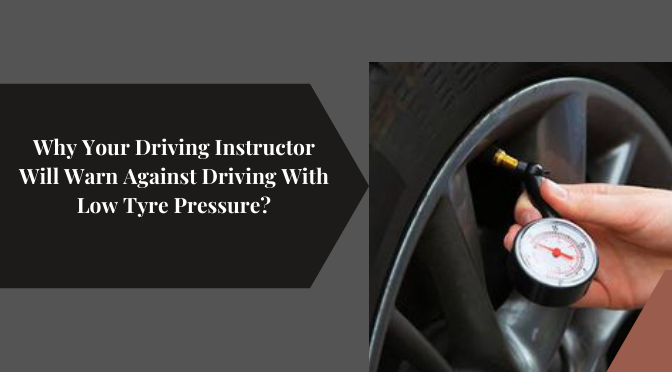When you have a flat tyre, you have to pull over at any cost, as you just cannot drive with a flat tyre. But what if you have a tyre with low pressure? Can you continue driving? You can – but you shouldn’t! In fact, the trainer of your driving school will always warn you from doing so. That’s the same with Start-Smart Driving School. Our instructors will always warn you against driving with low tyre pressure. But why? There are specific reasons behind it.
Why should you never drive with low tyre pressure?
When you continue driving with one or multiple tyres with low pressure, you run into a serious risk of tyre failure. Just imagine the scenario – you are driving at a high speed on a highway and your tyre suddenly blows.
When that happens, your control over your vehicle is lost and once that happens your life and that of the passengers are at stake. Besides, the low pressure of the tyre will affect fuel economy and will cause the tyres to suffer more than normal wear and tear.
How will you know that your tyre pressure is low?
That is the reason, all modern vehicles that are manufactured after 2008, are equipped with a state of the art tyre pressure monitor system (TPMS). The TPMS is designed to warn against low pressure in any one or multiple tyres. It tells you that the tyre(s) is/are under-inflated significantly, thereby creating unsafe conditions for driving.
This state of the art TPMS comes as a yellow symbol, which illuminates on the dashboard instrument panel in the shape of the cross-section of a tyre (resembling a horseshoe) and an exclamation mark. The sign illuminates as and when the tyre pressure gets under 25% of the manufacturer-prescribed PSI.
However, there are many vehicles that will display a message, telling ‘low tyre pressure’ and will even indicate which of the four tyres is experiencing low air pressure.
What should you do when the low tyre pressure light is displayed?
The first thing to do when you see the indicator illuminating is not to ignore it. This is what your driving instructor in Melbourne would tell you to do. They would tell you to check the air pressure of all the tyres whenever periodically, whenever you can. And you must continue doing so even if you are driving a comparatively newer vehicle.
Weather also plays a role in altering the air pressure in the tyres. In winter, you are likely to have lesser tyre pressure, as cold weather will cause the pressure to drop slightly. Hence, during the winter, you need to be more careful about the air pressure in the tyres.
In case the air pressure continues to drop steadily even after having the tyres fully filled, there is something wrong with the tyre(s) and you need to have it/them checked and repaired or replaced if needed.
So you see, there are so many things to look into in regards to tyre air pressure and if you have enrolled in a quality driving school in Melbourne, its mentors will always remind you to put optimum emphasis on this issue. We at Start-Smart Driving School will do the same. For further details, call us at 0418386090.

 0418 386 090
0418 386 090